QuestionI'm off to the petstore to buy some new pebble rock. Meanwhile I wanted to answer your questions.
I purchased an AquaBrite V starter kit, which is a 5 gallon plexi-glass tank. Unfortunately, I can't find anything on the box, or on the inserts that says anything about the filter (somehow I think "power filter system with easily changeable cartrige" is not exactly what you're looking for!) The plastic on the filter mechanism is marked "Regent", and it has what they call a bio-wheel. I'm pretty sure the cellophane on the actual filter insert (which is a blue mesh-y kind of material if that helps) said that it contained carbon, but unfortunately I've long since thrown that away. If none of this is helpful, I'll see if I can find a replacement cartridge while I'm at the pet store, that might give me some more clues.
-------------------------
Followup To
Question -
Chris-
Well, I'm still having problems and I'm at my wits end!
I've tried TWO 50% water changes using only distilled water. I'm adding ph balancer and biozyme. And the ph still hasn't moved below 7.4-7.6.
The nitrates are still as high as my test kit can measure (>1 ppm)
I have gravel that I bought at Walmart, and unfortunately have no way of knowing if it's dolomite. I have no shells. The only things in the tank are two plants (one fabric that came with the tank, and another plastic that I bought at the pet store) and a pre-formed plastic cave for the fish to hide in.
Do you think it could be something in the tank? Is the ph balancer a crappy brand? (The label reads "pH 7.0 Seachem Neutral Regulator...adjusts hight or low pH to 7.0) Maybe I should be using something that ONLY lowers pH?
Thank very much for all your help. Unfortunately, I don't know anybody with fish that I can pester, and the petstore has been absolutely useless.
Lissa
-----------------------
Followup To
Question -
I just wanted to let you know that, in the end poor Jelly-man didn't make it. :-( I guess I just didn't fix the water in time or the stress was just too much for him.
Initially, he was doing great. I was very surprised when I woke up the next morning and he was immobile again, suctioned to the air filter intake. I tried removing him from the tank again and adding more fresh water, but he never recovered.
While all this was happening I was frantically racing to PetCo for water test kits and chemicals. When I was finally able to check the water it came up:
PH = 7.8
Ammonia = 00925 (from what I could figure out)
Nitrate = 1+
The other golfish doesn't seem to be affected at all, but I started adding a ph balancer and bioenzyme to try to lower the ph and nitrates.
So far this hasn't changed anything. How long does it normally take for the water chemistry to react to the treatments?
Thanks again for all of your help. If you have any other suggestions to help keep my other poor goldfish from becoming a statistic, I'd greatly appreciate any information.
Answer -
Hi Lissa;
So sorry you lost him......
Just keep making those water changes to keep things under control for the other fella.
The pH is sure high though. Make sure you aren't keeping shells or dolomite gravel in there. These will make the pH stay up. If you don't have those, well it must be your tap water. The best way to lower it in a small tank is without using chemicals. Add distilled water and measure the pH every day. Minerals are what cause pH to elevate and distilled water has no minerals. Using "distilled only" is not good though. Fish need some minerals to do well.
More followups welcome.....
At Your Service;
Chris Robbins
Answer -
Hi Lissa;
If the pH won't go down in spite of using distilled water and using an adjuster, I would suspect dolomite gravel. That's mostly what they sell at my local WalMart. If it were my tank, I would ditch that gravel. Use it in the garden or something and get some pebble rock from the local fish store. The pH adjuster can't help if the dolomite is working against it.
You will still have to deal the nitrites though until it cycles. Make lots of water changes to keep them down. How big is the tank and how long has it been set up? I also forgot to ask you what kind of filter it has and all that stuff. Let me know and we can keep working on this thing to get it right.
Ask as many followups as you need. That's what I'm here for.
At Your Service;
Chris Robbins
AnswerThat's just what I wanted to know! Sounds like a pretty good setup. The bio-wheel is good filtration once it breaks in. Break-in for a new tank takes 6 to 8 weeks. The one fish you have is all you should keep in there. He pretty much maxes it out. He will need a bigger one in a few months too. Goldfish get pretty large and are messy little fellas.
In case it's a new tank (less than 8 weeks) here is my article on new tanks to help you through it;
**********
New Tank Syndrome or Break-in Period
So you have a new tank and you filled it up, put the filter together, mounted the heater into place and turned on the lights. You have all the plants and decorations where you want them....
You are ready for fish.
But, your filter is not ready for a full tank of fish yet.
The filter is running and moving the water and cleaning out crud, right? Of course!
But a very important part of your filter is the part you can't see. An aquarium filter removes the larger visible stuff, but it also must remove the dissolved fish waste that turns into ammonia in the water. To do this, special bacteria must grow in the filter system and on the particles of gravel in the bottom of your tank. This process occurs even on a limited scale in little fish bowls that have no filter in them.
This is "New-Tank Syndrome" or the "Break-in Period". The entire process takes 6 to 8 weeks to complete because these "nitrifying" bacteria grow quite slowly.
Start off with only two hardy fish for every ten gallons of water and don't add more until the 6 to 8 weeks has gone by. Hard to be patient, but it is worth it to keep your fish alive and healthy. As a matter of fact, the bacteria cannot develop without fish in the tank. You can let that tank sit forever without fish in it, but as soon as the first fish goes in the process begins. Avoid changing the filter pads during break-in. This removes the bacterial colonies that are essential to a balanced aquarium. You can rinse the filter pad out in a container of aquarium water. This will preserve most of the bacteria colonies while still allowing your filter to flow freely. Even using bacteria additives and water conditioners when you first set up the tank will not make a tank cycle by itself. If there are no fish to provide food (fish waste) for the bacteria, the beneficial bacteria cultures will die and you will have to start the colonies all over again once fish are added to the tank.
Feed your new fish VERY lightly. Any excess food will cause additional waste your system cannot afford to have right now. If you see food floating around or lying on the plants and gravel after five minutes, too much food is going into the tank. Cut back a little each time you feed until it is ALL gone 5 minutes after you feed them.
During this "break-in period" your tank will become cloudy and milky looking. You may have to tolerate this for the entire break-in period but it is only temporary. Changing 25% of the water three times a week until the break-in period is over helps a great deal. Changing water reduces the ammonia and nitrites that rise while the bacteria continues to multiply. If ammonia and/or nitrites become too high, your fish will become stressed and possibly die. Use a good water conditioner when you replace the water and make sure it is the right temperature to avoid shocking your fish.
When the break-in is over after 6 to 8 weeks and there are no nitrites or ammonia present in the water you can slowly add more fish. Add one or two every week until you reach the desired population. This allows the bacteria to adjust to the new population every time before adding more. Monitor the nitrites and ammonia to be sure they don't come up. If they do, make a 25% water change and check them again. Don't add the next fish until the levels are down again.
The safe maximum population for any size tank is one inch of adult fish for every gallon of water in the tank. Do some research to be sure of the fish you are interested in. Even though they are small when you buy them, you have to base your population calculations on full-sized adult fish. Many hobbyists have up to two inches per gallon but this can be risky. If a water quality issue arises or a disease occurs it will spread fast and furious in an over-populated tank. In any case, 25% water changes every week to two weeks are absolutely essential for the health of your fish.
Following these guidelines will help you get your new tank on the right track.
**********
Need more followups? Ask me anytime!
Chris Robbins

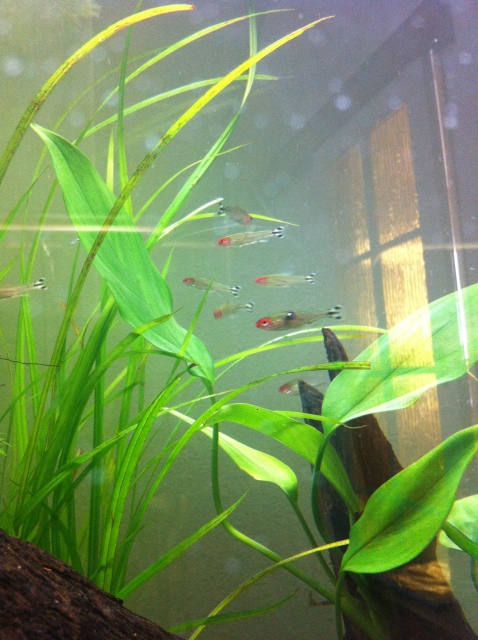 black mark on a rummy nose tetra
Questionsick rummynose
QUESTION: Hi there,
I ho
black mark on a rummy nose tetra
Questionsick rummynose
QUESTION: Hi there,
I ho
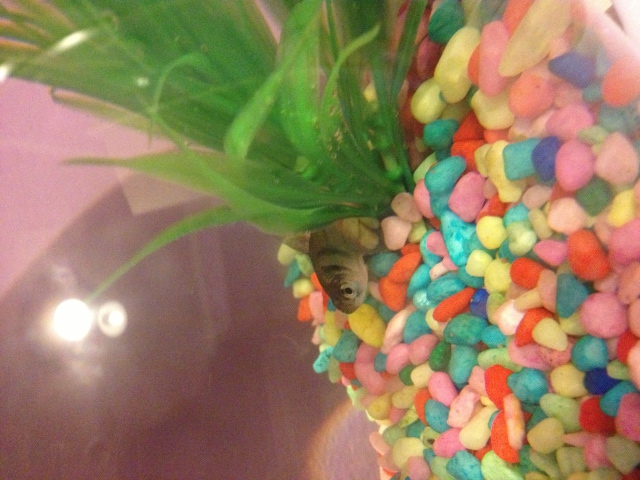 Black widow (tetra)
Question
Tetra
Hi there,
I am a very concerned f
Black widow (tetra)
Question
Tetra
Hi there,
I am a very concerned f
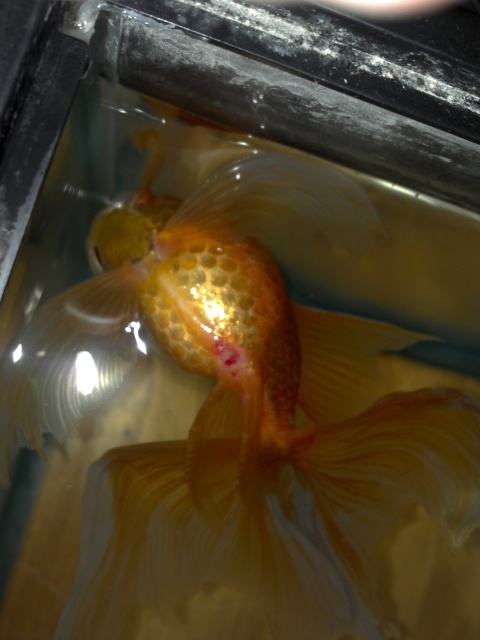 goldfish floating upside down...help please!
QuestionShirley1
QUESTION: My daughters goldfish
goldfish floating upside down...help please!
QuestionShirley1
QUESTION: My daughters goldfish
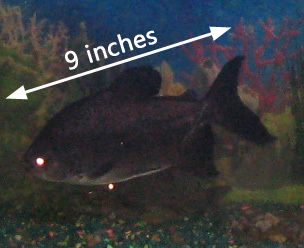 Inherited large fish & tank, what are they?
Question
Mystery Fish
I inherited a huge fish tank with
Inherited large fish & tank, what are they?
Question
Mystery Fish
I inherited a huge fish tank with
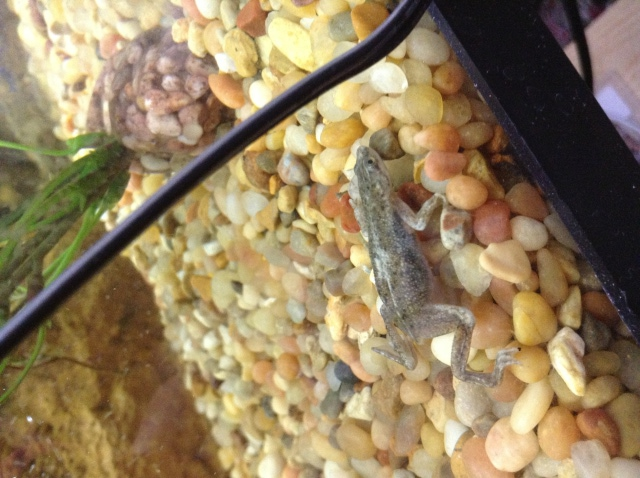 African dwarf frog
Question
Side/top Front
My African dwarf
African dwarf frog
Question
Side/top Front
My African dwarf